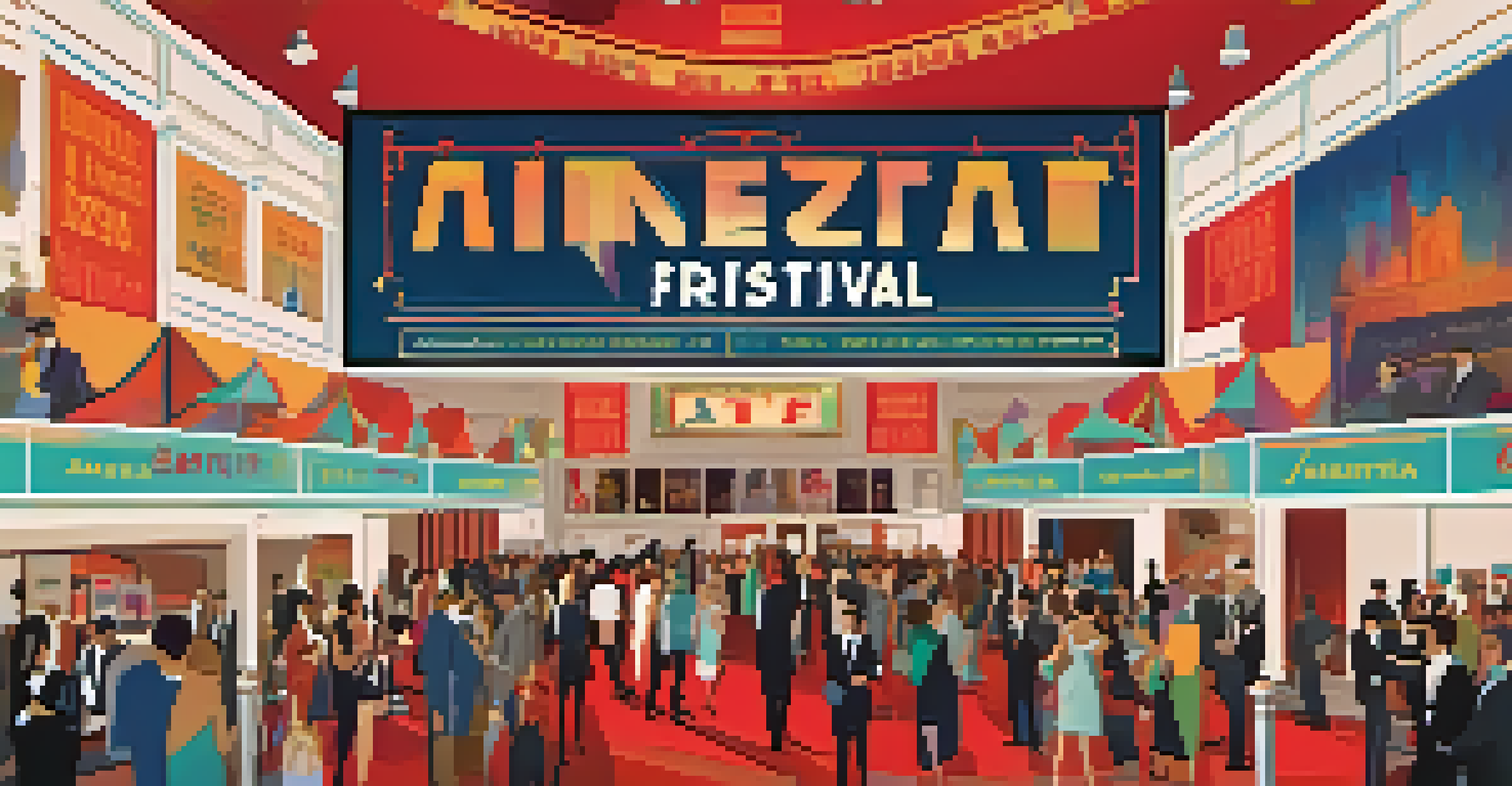The Rise of Streaming Services and Its Impact on Film Culture

The Evolution of Film Distribution in the Digital Age
Film distribution has undergone a dramatic transformation with the advent of streaming services. In the past, movies were primarily consumed through theaters or physical media like DVDs. However, platforms like Netflix, Hulu, and Amazon Prime have shifted the focus to digital distribution, making films more accessible than ever before.
The future of cinema is not in the hands of a few, but in the hands of many.
This shift has not only changed how films are consumed but also when and where viewers can enjoy them. No longer bound by the constraints of showtimes or rental periods, audiences now have the freedom to watch films at their convenience. This newfound flexibility has reshaped viewing habits and expectations.
As a result, traditional film release strategies are being re-evaluated. Studios are now experimenting with simultaneous releases in theaters and on streaming platforms, leading to a more competitive landscape for film distribution. This evolution signifies a new era for both filmmakers and audiences.
Changing Viewer Habits and Preferences
The rise of streaming services has significantly influenced viewer habits and preferences. With an extensive library of films available at the click of a button, audiences are now more inclined to binge-watch series or discover hidden gems rather than waiting for a traditional release. This shift has fostered a culture of instant gratification.

Moreover, streaming platforms often curate personalized recommendations, making it easier for viewers to find content that resonates with their tastes. This tailored experience not only caters to diverse interests but also encourages exploration beyond mainstream blockbusters. Viewers are now more open to international films and indie projects.
Streaming Transforms Film Access
The rise of streaming services has made films more accessible, allowing viewers to watch at their convenience and reshaping traditional distribution strategies.
As a result, filmmakers are motivated to create unique and diverse content that appeals to niche audiences. This change in viewer behavior has paved the way for innovative storytelling, allowing creators to take risks that might not have been possible in the traditional film industry.
The Rise of Original Content on Streaming Platforms
Streaming services have become major players in film production, with many investing heavily in original content. This shift has led to an abundance of unique films and series that might not fit the conventional mold of Hollywood blockbusters. Creators are given the freedom to explore unconventional narratives, further enriching the film landscape.
Streaming services have democratized access to films, allowing diverse voices to be heard and seen.
For instance, Netflix and Amazon have produced award-winning films that challenge traditional storytelling norms, such as 'Roma' and 'Manchester by the Sea.' These successes demonstrate that streaming platforms are not just distributors but also influential producers shaping the future of cinema.
As a result, the competition among streaming services to produce original content has intensified, leading to a creative renaissance in the industry. With more platforms vying for viewer attention, filmmakers are presented with opportunities to showcase their work to a broader audience.
Impact on Traditional Cinema and Theaters
The rise of streaming services has undeniably affected traditional cinema and theaters. With audiences increasingly opting for the convenience of home viewing, theaters have faced declining ticket sales. This trend raises questions about the future of the cinema experience, which has long been associated with the thrill of watching films on the big screen.
Despite these challenges, many theaters are adapting by offering unique experiences to draw audiences back. From luxury seating and gourmet concessions to themed screenings and live events, cinemas are creating environments that elevate the viewing experience beyond what can be replicated at home.
Original Content Drives Innovation
Streaming platforms are investing in original content, enabling filmmakers to explore unconventional narratives and fostering a creative renaissance in the industry.
However, the coexistence of streaming and theatrical releases may lead to a new balance in the industry. While some films may thrive in theaters, others will find their audience through streaming, creating a more diverse film culture that accommodates various viewing preferences.
Globalization of Film Culture Through Streaming
Streaming services have played a pivotal role in the globalization of film culture. With access to international content now more accessible than ever, viewers can explore films from different countries and cultures. This exposure fosters a greater appreciation for diverse storytelling and artistic expression.
For example, popular films like 'Parasite' and series such as 'Money Heist' have gained massive followings outside their countries of origin. This trend highlights how streaming platforms can bridge cultural gaps and introduce audiences to narratives that challenge their perspectives.
By promoting global cinema, streaming services are also encouraging filmmakers to create stories that resonate with a wider audience. This interconnectedness enriches the film culture landscape, allowing for a cross-pollination of ideas and styles that benefit both creators and viewers.
The Role of Data and Analytics in Film Production
One of the most significant advantages of streaming services is their ability to collect vast amounts of viewer data. This data provides valuable insights into audience preferences, viewing habits, and trends, which can inform decisions in film production and marketing. Filmmakers can now tailor their content to meet the demands of specific demographics.
For instance, platforms can analyze which genres are trending or which types of characters resonate with audiences. This information allows producers to make informed choices about casting, storylines, and even marketing strategies, ultimately increasing the chances of a film's success.
Globalization Enhances Film Culture
Streaming services are bridging cultural gaps by providing access to international films, enriching global film culture and promoting diverse storytelling.
However, this data-driven approach also raises questions about creativity and artistic freedom. While understanding audience preferences is essential, there's a risk that filmmakers may prioritize commercial success over innovative storytelling, potentially stifling originality in the industry.
Future Trends: What Lies Ahead for Film Culture?
As streaming services continue to evolve, the future of film culture is likely to be shaped by emerging trends and technologies. Concepts like virtual reality and interactive storytelling are already making waves, and these innovations could redefine the way audiences engage with films. Imagine immersing yourself in a story where you can influence the plot or interact with characters.
Additionally, the proliferation of streaming services may lead to increased competition, prompting platforms to continuously innovate in both content creation and user experience. This competitive landscape could result in higher quality productions and more diverse storytelling, benefiting audiences worldwide.

Ultimately, the rise of streaming services has initiated a cultural shift that emphasizes accessibility, diversity, and experimentation. As audiences embrace these changes, the film industry must adapt, paving the way for a rich and vibrant future for film culture.